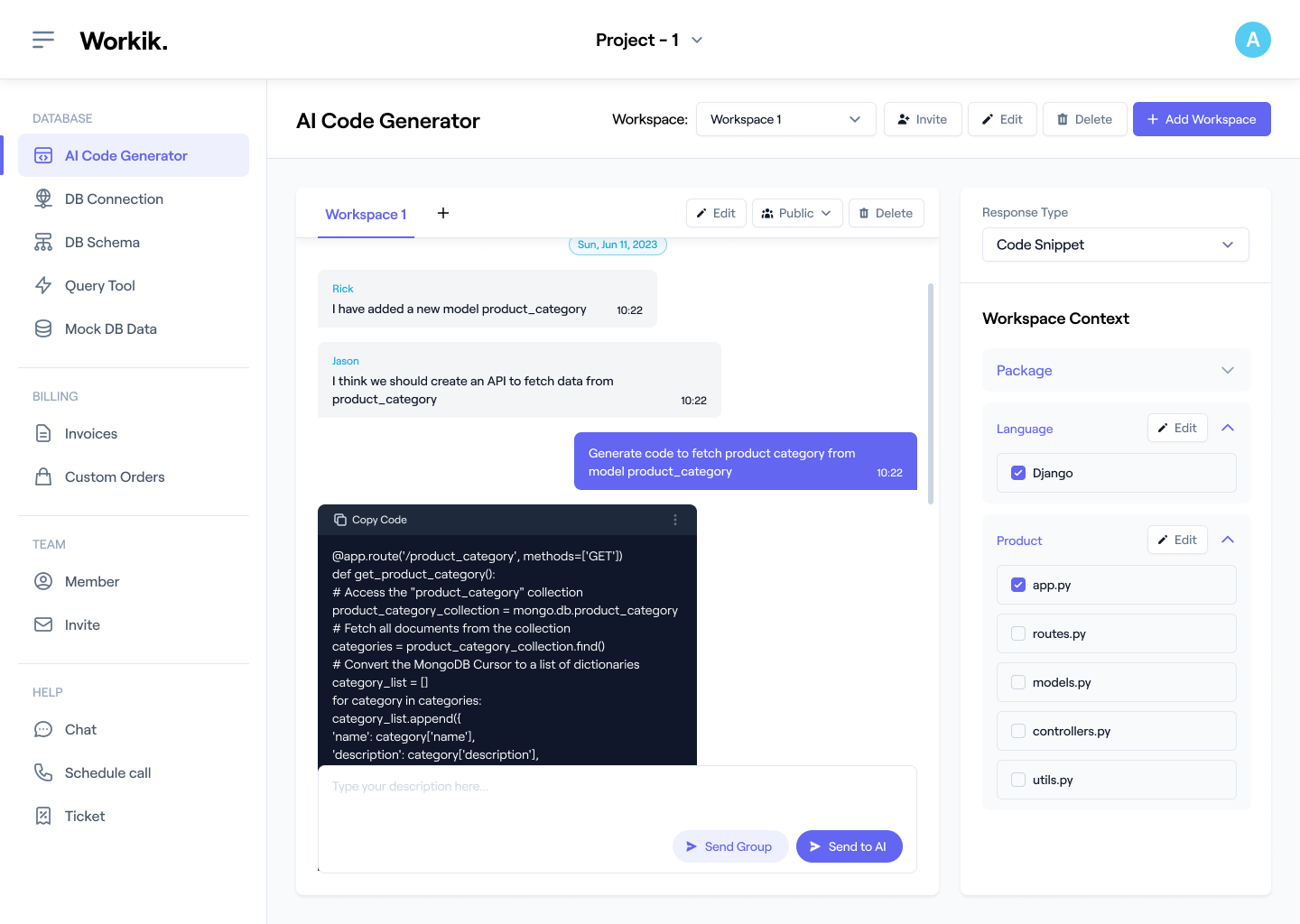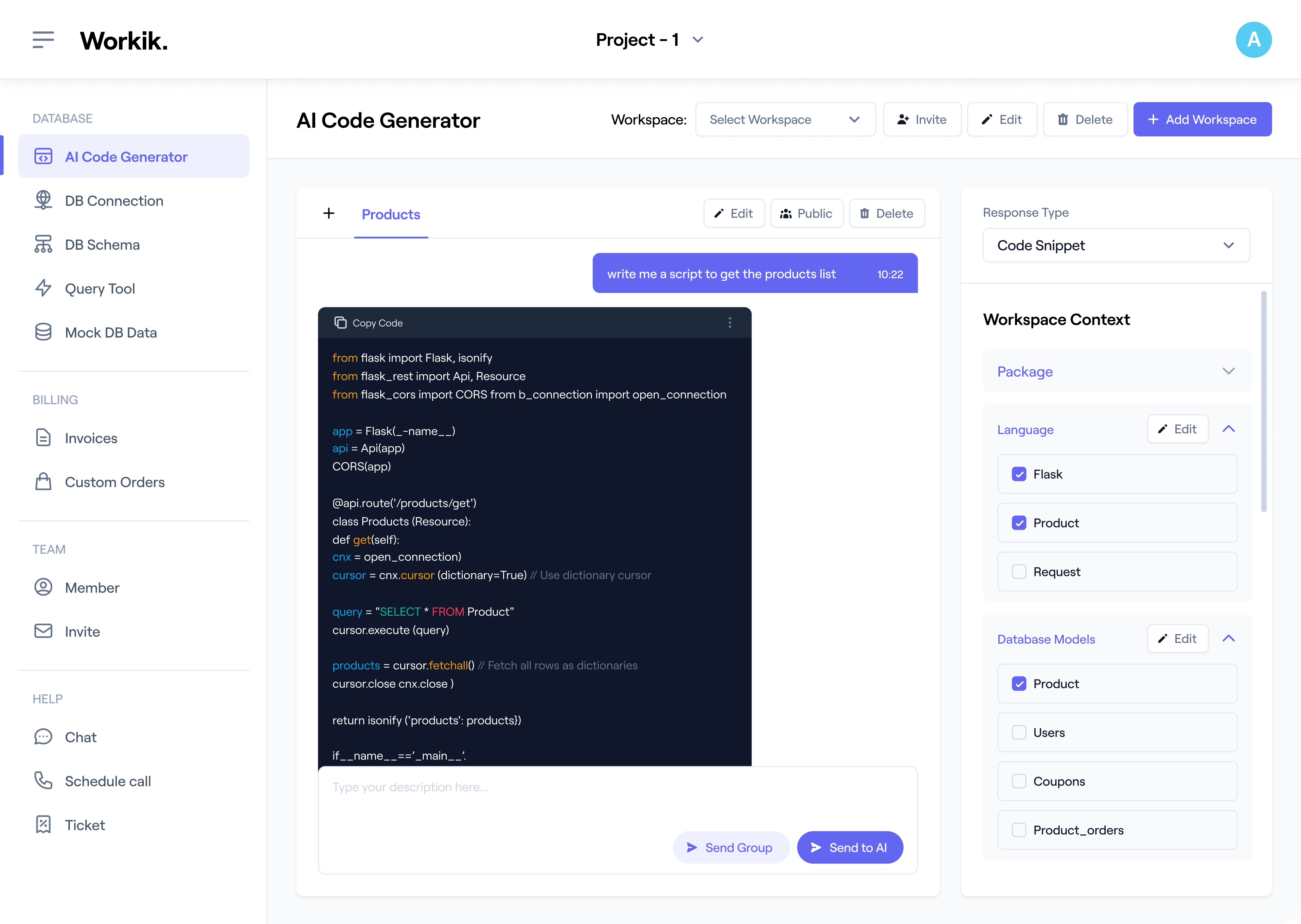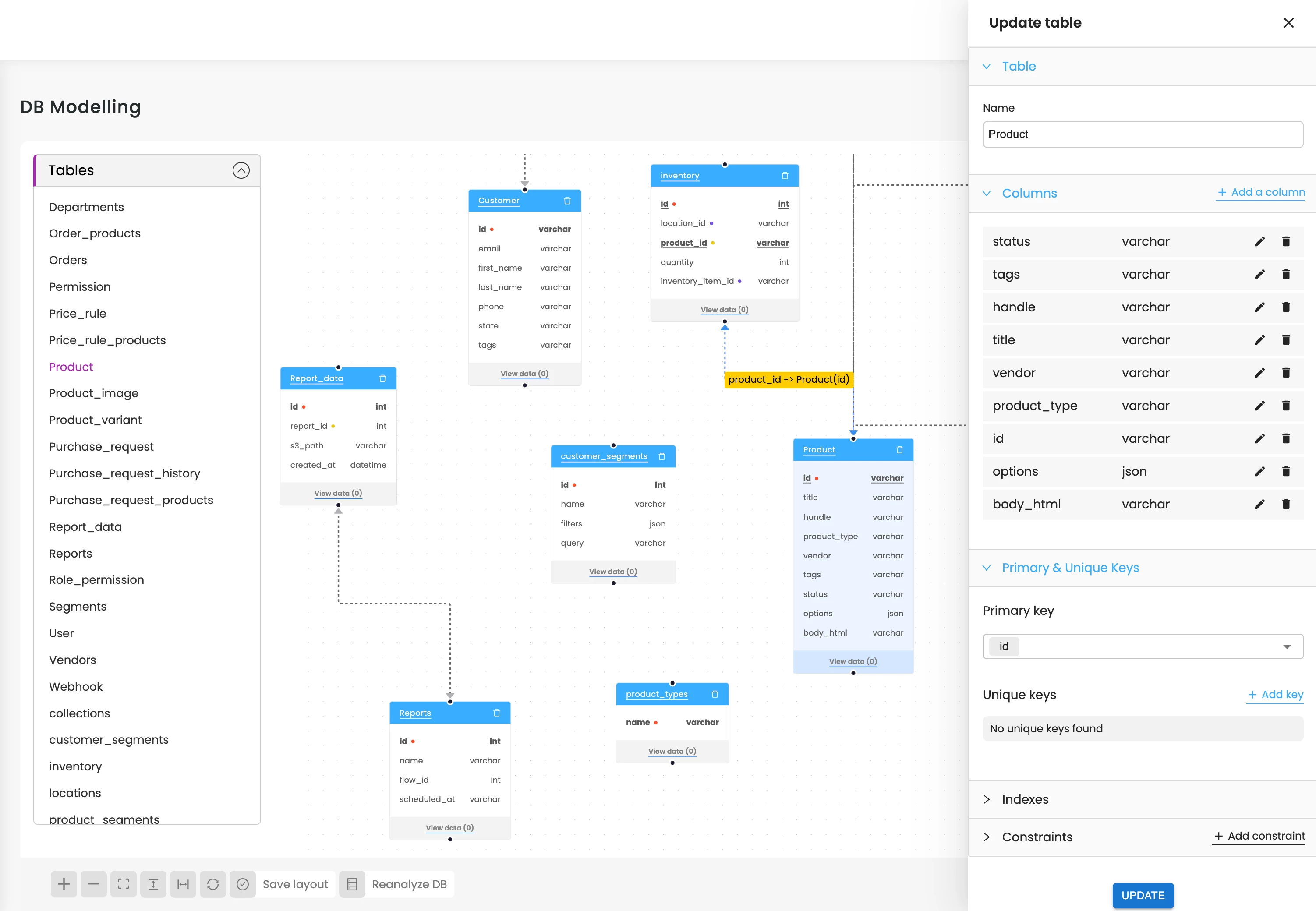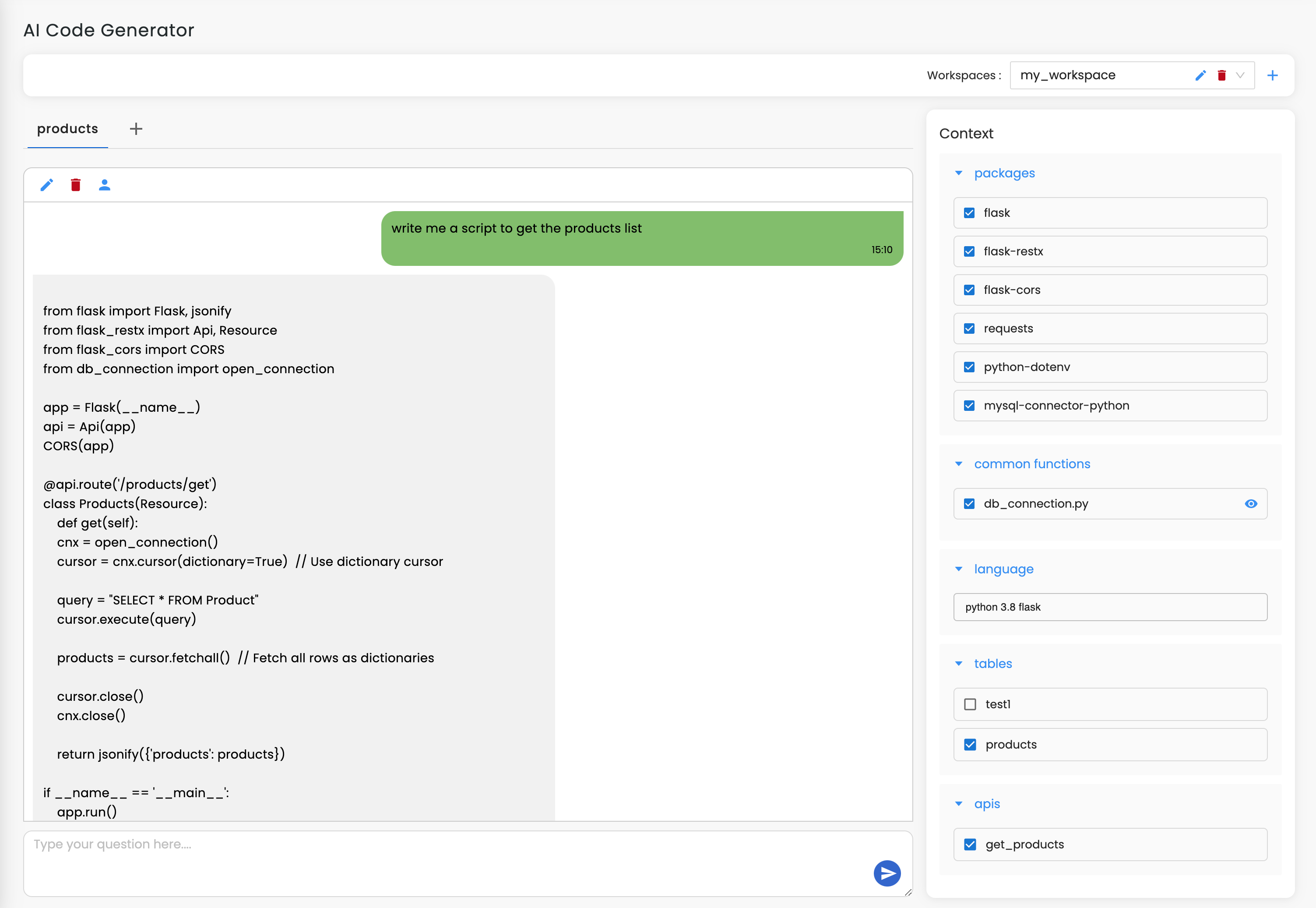
Join our community to see how developers are using Workik AI everyday.
Features

Generate Zephyr Code
Use AI to craft Zephyr-compliant code for device trees, Kconfig, and subsystems based on hardware inputs.

Optimize Real-Time Performance
AI analyzes task scheduling, thread priorities, and resource allocation, suggesting refinements to minimize latency.

Configure Peripheral Drivers
AI can identify and configure GPIO, I2C, UART, and other peripherals using Zephyr’s HAL libraries.

Debug Zephyr Firmware
Detect logical errors in applications and provides fixes using GDB and Zephyr’s native logging subsystems.
How it works
Quickly create your Workik account and start building Zephyr-based embedded solutions in seconds.
Import Zephyr projects from GitHub, GitLab, or Bitbucket, or manually define your device tree, Kconfig, and HAL requirements. Add hardware details, libraries, and dependencies to ensure precise AI guidance.
AI can generate device tree files, Kconfig settings, and driver code. Seamlessly integrate subsystems, automate debugging, create test cases to validate firmware quality, and more.
Workik synthesizes Zephyr firmware and automates unit testing, ensuring seamless integration and bug-free functionality for your embedded systems.


Expand
.png)
.png)
Expand


Expand


Expand


Expand


Expand


Expand


TESTIMONIALS
Real Stories, Real Results with Workik
Workik AI made driver integration with Zephyr seamless. A game-changer for IoT development!

Lara Thompson
Embedded Systems Engineer
Automating Kconfig and device tree generation has never been this effortless. Workik is a lifesaver.

Theo Nguyen
Firmware Developer
Debugging Zephyr RTOS projects is faster with Workik’s precise AI insights. Highly efficient!

Vasant Bhatt
IoT Solutions Architect
What are the popular use cases of Workik's AI Zephyr Code Generator?


Popular use cases of Workik's AI for Zephyr development include, but are not limited to:
* Prototype embedded systems rapidly with AI-generated firmware for quick testing.
* Automate driver integration and device tree management for IoT projects.
* Build real-time systems with AI-optimized scheduling and resource allocation.
* Configure peripherals seamlessly using Zephyr’s HAL and subsystems.
* Accelerate low-power device development with AI-tuned power management.
* Streamline debugging of Zephyr RTOS projects with targeted AI insights.
* Generate and validate test cases for reliable embedded system performance.
What kind of contexts can I add in Workik’s AI-powered Zephyr code generator?


Adding context is optional but enhances AI output, tailoring it to your Zephyr project. You can:
* Connect to GitHub, Bitbucket, or GitLab for seamless project sync.
* Specify Zephyr subsystems, libraries, and dependencies for precise code generation.
* Provide hardware specifications, including device tree structures and peripheral configurations.
* Upload existing firmware files to refine AI suggestions.
* Add API documentation for integrating custom drivers or external modules.
* Define project-specific constraints, such as memory limits or timing requirements.
How can Workik AI improve energy efficiency in embedded systems?


Workik AI leverages Zephyr’s power management APIs to configure low-power states, optimize clock frequencies, and reduce idle power consumption. For example, in battery-operated IoT sensors, AI can generate power-efficient firmware that adjusts dynamically to sensor activity and network demands.
Can Workik AI help me customize Zephyr for specific hardware platforms?


Yes, AI analyzes your hardware specifications and generates Zephyr configurations tailored to platforms like Nordic nRF, STM32, or ESP32. For instance, it can generate driver code for custom sensors and optimize memory allocation to match hardware constraints.
How does Workik AI support multi-threaded real-time applications in Zephyr?


Workik AI designs thread structures with optimal priorities, stack sizes, and mutexes for complex applications. For example, in a robotics project, AI can ensure the smooth execution of motor control, sensor data processing, and communication threads.
How does Workik AI help with peripheral-heavy Zephyr projects?


AI simplifies the integration of multiple peripherals by configuring device tree overlays, generating driver code, and validating communication protocols like I2C, SPI, or UART. For instance, in a wearable health tracker, AI can streamline the connection between sensors, BLE modules, and storage.
How does Workik AI streamline secure firmware development for Zephyr?


AI leverages Zephyr’s security frameworks to configure secure boot, TLS protocols, and memory protection regions. For example, in medical devices, AI can generate code to encrypt patient data while ensuring secure OTA updates to comply with stringent security standards like HIPAA.
Generate Code For Free

Zephyr: Question and Answer
Zephyr is a scalable, open-source real-time operating system (RTOS) designed for embedded systems. It supports multi-threading, power management, and a wide range of hardware architectures, making it ideal for IoT devices, wearables, and industrial applications. Zephyr’s modular structure and extensive APIs allow developers to build customized solutions for resource-constrained devices.
Popular frameworks and libraries used in Zephyr include:
Device Management:
Zephyr Device Tree, Kconfig
Networking:
LwM2M, MQTT, CoAP
Peripheral Interfaces:
GPIO, I2C, SPI, UART
Security:
Zephyr Crypto APIs, TLS/DTLS
Power Management:
Zephyr Power Management Framework
Testing and Debugging:
Zephyr Unit Testing, GDB, Segger RTT
Popular use cases of Zephyr include but are not limited to:
IoT Applications:
Develop low-power, connected IoT devices with efficient networking stacks.
Wearable Devices:
Build lightweight, battery-optimized firmware for wearables.
Industrial Automation:
Create real-time control systems for manufacturing and robotics.
Sensor Networks:
Design robust sensor nodes with seamless data aggregation.
Medical Devices:
Implement secure and reliable firmware for diagnostic and monitoring equipment.
Career opportunities and technical roles available for Zephyr professionals include Embedded Systems Engineer, Firmware Developer, IoT Engineer, RTOS Developer, Hardware-Software Integration Engineer, and Industrial Automation Specialist.
Workik AI provides end-to-end support for Zephyr development, including:
Code Generation:
Automatically generates device tree files, Kconfig, and driver code.
Debugging Assistance:
Identifies bugs in firmware and suggests fixes with tools like GDB and Zephyr logs.
Performance Optimization:
Recommends improvements in thread scheduling, stack allocation, and resource management.
Automation:
Automates repetitive tasks such as driver initialization, test case creation, and documentation.
Peripheral Integration:
Configures and optimizes GPIO, I2C, SPI, and UART for seamless peripheral communication.
Networking Support:
Sets up and fine-tunes Zephyr’s networking protocols like MQTT and CoAP.
Power Management:
Suggests configurations to maximize battery life in low-power devices.
Testing:
Automates unit and integration testing, ensuring flawless hardware-software integration.
Explore more on Workik
Get in touch
Don't miss any updates of our product.
© Workik Inc. 2025 All rights reserved.

